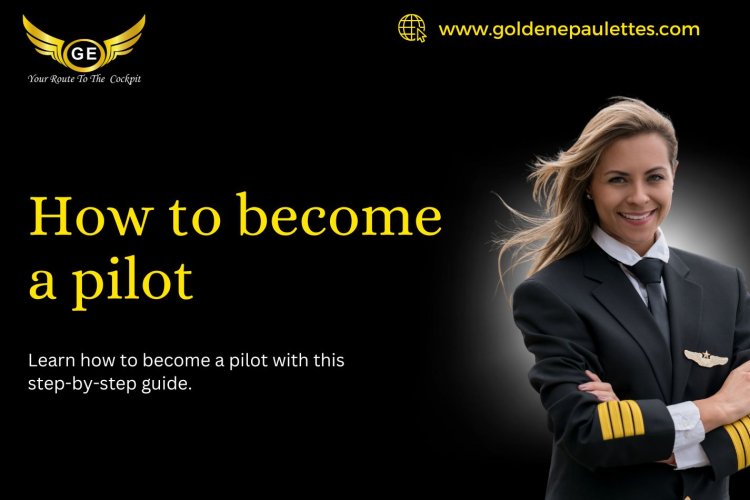How to Become a Helicopter Pilot
If you’ve ever dreamed of soaring through the skies, controlling a powerful helicopter, and turning your passion for aviation into a career, then learning how to become pilot is the first step.

How to Become a Helicopter Pilot in India – A Complete Guide
If you’ve ever dreamed of soaring through the skies, controlling a powerful helicopter, and turning your passion for aviation into a career, then learning how to become pilot is the first step. Helicopter pilots enjoy an exciting and rewarding profession, with opportunities in commercial aviation, emergency medical services, tourism, and defense.
In this comprehensive guide, we’ll cover everything you need to know about how to become pilot in India, including eligibility, training, costs, career prospects, and salary expectations.
1. Why Become a Helicopter Pilot?
Before diving into the process of how to become a helicopter pilot, it’s important to understand the benefits of this career:
-
High Demand: The aviation industry in India is growing, creating more job opportunities for pilots.
-
Lucrative Salary: Helicopter pilots earn attractive salaries, especially in commercial and defense sectors.
-
Adventure & Travel: Pilots get to fly to different locations, making every day unique.
-
Diverse Career Options: From tourism to rescue missions, helicopter pilots work in various fields.
2. Eligibility Criteria to Become a Helicopter Pilot in India
To start your journey on how to become pilot, you must meet certain eligibility requirements:
A. Educational Qualifications
-
Minimum 10+2 (Science Stream): You must have completed Class 12 with Physics and Mathematics.
-
Medical Fitness: A DGCA (Directorate General of Civil Aviation) approved Class 2 Medical Certificate is mandatory.
B. Age Limit
-
Minimum Age: 17 years to start training.
-
Maximum Age: No strict limit, but airlines prefer candidates below 35 for commercial roles.
C. Physical & Medical Requirements
-
Good eyesight (6/6 vision, glasses allowed up to a certain limit).
-
No major illnesses (heart conditions, epilepsy, etc.).
-
Hearing must be within normal range.
3. Steps to Become a Helicopter Pilot in India
Now, let’s break down the step-by-step process of how to become pilot in India:
Step 1: Research & Choose a Flying School
-
India has several DGCA-approved flying schools where you can get trained.
-
Some top institutes include:
-
Indira Gandhi Rashtriya Uran Akademi (IGRUA)
-
Rajiv Gandhi Academy for Aviation Technology (RGAAT)
-
Bombay Flying Club
-
Madras Flying Club
-
Step 2: Obtain a Student Pilot License (SPL)
-
Enroll in a DGCA-recognized flying school.
-
Complete ground training (theoretical knowledge).
-
Pass an entrance exam and medical test.
Step 3: Complete Flight Training (Private Pilot License - PPL)
-
Minimum 40-60 hours of flight training (including solo flights).
-
Pass written and practical exams.
-
PPL allows you to fly helicopters but not for commercial purposes.
Step 4: Get a Commercial Pilot License (CPL-H)
-
Requires 150 hours of flight time (including PPL hours).
-
Advanced training in navigation, emergency procedures, and night flying.
-
Clear DGCA exams (Air Regulations, Aviation Meteorology, Technical General, etc.).
Step 5: Gain Experience & Ratings
-
Instrument Rating (IR): Allows flying in poor visibility.
-
Type Rating: Certification for specific helicopter models.
-
Instructor Rating (Optional): To train new pilots.
Step 6: Apply for Jobs
-
Opportunities in:
-
Commercial Airlines (Helicopter charters, tourism).
-
Defense (Indian Army, Navy, Air Force).
-
Emergency Services (Air ambulance, disaster relief).
-
Offshore Operations (Oil & gas industry).
-
4. Cost of Helicopter Pilot Training in India
One of the biggest concerns when learning how to become pilot is the cost. Here’s a breakdown:
| Training Stage | Estimated Cost (in ₹) |
|---|---|
| PPL (Private Pilot License) | ₹15-20 Lakhs |
| CPL-H (Commercial Pilot License) | ₹25-35 Lakhs |
| Type Rating (Additional) | ₹5-10 Lakhs |
| Total Estimated Cost | ₹40-65 Lakhs |
Ways to Reduce Costs:
-
Scholarships: Some flying schools offer financial aid.
-
Bank Loans: Many banks provide education loans for pilot training.
-
Sponsorships: Some airlines sponsor training in exchange for a service contract.
5. Career Opportunities & Salary for Helicopter Pilots in India
After completing your training on how to become a helicopter pilot, you can explore various career paths:
A. Job Roles
-
Commercial Helicopter Pilot (Charter services, tourism).
-
Military Pilot (Indian Air Force, Army Aviation Corps).
-
Emergency Medical Services (EMS) Pilot (Air ambulance).
-
Offshore Pilot (Oil rig transport).
-
Flight Instructor (Training new pilots).
B. Salary Expectations
| Experience Level | Average Salary (Monthly in ₹) |
|---|---|
| Fresher (0-2 years) | ₹1.5 - 3 Lakhs |
| Mid-Level (3-5 years) | ₹3 - 6 Lakhs |
| Experienced (5+ years) | ₹6 - 12 Lakhs |
| Defense Pilots | ₹8 - 15 Lakhs (with benefits) |
6. Challenges of Becoming a Helicopter Pilot
While the journey of how to become pilot is exciting, it comes with challenges:
-
High Training Cost: Requires significant financial investment.
-
Medical Fitness: Strict health standards must be maintained.
-
Competition: Limited seats in flying schools and high demand for jobs.
-
Irregular Work Hours: Pilots often work long shifts, including nights and weekends.
7. Tips for Aspiring Helicopter Pilots
-
Start Early: The younger you begin training, the better.
-
Stay Physically Fit: Regular exercise and eye care are crucial.
-
Network with Pilots: Join aviation forums and connect with professionals.
-
Prepare Financially: Explore loan options or sponsorships.
-
Stay Updated: Follow DGCA guidelines and industry trends.
Conclusion
Becoming a helicopter pilot is a challenging yet highly rewarding career path. By following the steps outlined in this guide on how to become pilot, you can turn your dream of flying into reality. From obtaining the right licenses to securing a high-paying job, the journey requires dedication, investment, and passion.
If you’re ready to take the leap, start researching flying schools, meet the medical requirements, and embark on an exciting career in aviation!
What's Your Reaction?
















.jpg)